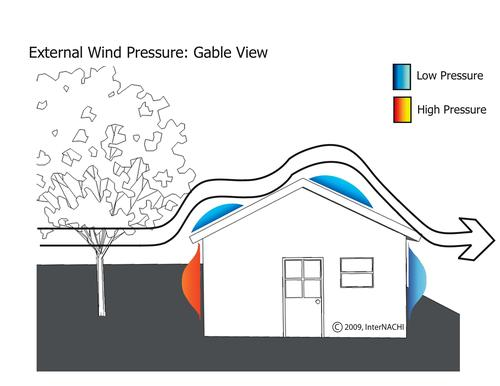Wind Mitigation Inspection
- dgarrido0
- Jul 4, 2023
- 4 min read

Wind mitigation is the utilization of specific construction methods to reduce damage caused by strong winds.
A Few Windstorm and Wind Insurance Facts
In 2006, Citizens Insurance, a major property insurer in Florida, asked for a 45% hike in rates for wind insurance. Other insurance companies followed suit with comparable measures.
In Florida, the section of a homeowner's premium that includes wind destruction can account for as much as 70% of the overall cost, contingent on the area.
Homeowners, private insurers, and all governmental levels gain from wind mitigation.
Wind mitigation incentives
In certain states, homeowners can enjoy lower insurance premiums. The states along the Gulf Coast, which are at high risk for windstorm damage caused by hurricanes, have individually contemplated implementing incentives to minimize wind-related damage. Mississippi and Texas presently lack such legislation, although Florida has achieved success. In the aftermath of Hurricane Andrew, Florida enacted a statute that mandates insurance companies to provide discounts and credits to policyholders for existing building features and home improvements that mitigate wind damage. To be eligible for this reduction, homes must undergo an authorized inspection for wind resistance. Nevertheless, numerous residents of Florida are unaware of this legislation.
Those with windstorm coverage can keep away from a steeply-priced deductible. Deductibles for houses in hurricane-susceptible regions can exceed $20,000, meaning that moderate to mild wind damage won't be protected by coverage. Those prices may be prevented altogether if the right wind mitigation strategies were used.
By reducing wind damage, the house is better protected. When a house is damaged, it always costs money, for both the homeowner and the insurer, even if the home is insured. As was the case after Hurricane Katrina devastated Louisiana, repairs might take months, particularly when there are material shortages due to the extensive damage to entire neighborhoods.
In order to be approved for a mortgage in Florida, lenders require home owners to have windstorm insurance. Homes that are at risk of wind damage may not be eligible for windstorm insurance.
Checklist for Wind Mitigation Techniques:
Garage doors: These typically fail at some stage in windstorms due to:
inadequate door-track strength and mounting systems; and
flimsy metal panels.

The following functions can shield a storage door from wind damage:
no windows;
track brackets that are securely attached to the wall; and
horizontal and/or vertical reinforcement on all panels.
opening protection:
It is recommended to replace all glass doors and windows with impact-resistant glass. Glass doors and windows must be attached to the structure of the building so that the entire window does not pop out of the frame. A sliding glass door is prone to flying debris because of its large surface area. When an opening occurs during a wind storm, the pressure inside the home can rise to the point where the roof collapses in low-pressure areas. The image to the right shows how these low-pressure areas can form.
roof covering:
There are many different types of roof covering material, and some are more resistant to wind damage than others. The most popular roof covering material in Florida is composition shingles and tiles. One of the most important factors in the performance of your roof covering is how it is attached to your roof deck. These materials should be fastened with nails, not staples.
roof shape:
Roof shape refers to the roof’s geometry, not the roof covering. Gable roofs have vertical gable end walls that extend out to the sloped roof line. If not properly constructed or supported, these gable end walls can collapse outward due to negative suction on the wall’s surface. In addition, field testing shows that hip roofs take up to 40 percent less wind pressure than traditional gable roofs.
roof deck attachment:
Insurance claim data shows that a home becomes a significant loss when the roof deck fails, even if only partially. The two most common types of roof decks are plywood roof decks and OSB roof decks. The most significant feature of a roof deck is the way it attaches to the framing relative to the thickness of the deck. The following roof deck building methods can help protect your home from wind damage:
roof coverings using shingles that meet the FBC requirements;
roof decks that have been installed with large nails and close spacing;
hurricane clips/straps that hold the roof structure to the walls; and
protection of windows and glass doors with impact-resistant glazing or other protection systems.
roof-to-wall connections:
This connection is an important safety feature that holds the roof of the building in place and transfers the lift loads to the vertical walls of the building. Due to the high negative pressures on the roof, this connection is vital to the building’s performance. Proper installation of this connection is critical to connector performance.
secondary water resistance:
What is a secondary water barrier?
A secondary water barrier protects your home from water damage if a roof covering fails. It reduces the amount of water that can seep through your roof if your shingles have been blown off. Secondary water barriers are relatively uncommon in homes. Here are the two most common secondary water barriers:
self-adhering modified bitumen underlayment, which is applied to the exterior of all joints; and
foam seal, which is sprayed onto the underside of the decking.
In short, wind mitigation is an approach to reduce wind damage to a structure. There are several incentives for homeowners to make these improvements, and Pro-Elements home inspectors can identify what needs to be improved.





Comments